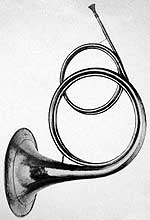- Ble medlem
- 17.06.2007
- Innlegg
- 1.367
- Antall liker
- 89
denne er fin på en lørdagskveld






Erato; så spennende ut den der, liker Tasmin Little godt jeg. Det var vel fire fiolinsonater såvidt jeg vet, 1-3 og en unummerert i H. Et annet alternativ er kanskje denne;Except for Delius, Beecham was generally antipathetic to, or at best lukewarm about, the music of his native land and its most acclaimed composers. Beecham's championship of Delius promoted the composer from relative obscurity. The great authority on Delius, Eric Fenby, referred to Beecham as "excelling all others in the music of Delius... Groves and Sargent may have matched him in the great choruses of A Mass of Life, but in all else Beecham was matchless, especially with the orchestra."
Beecham put on a Delius Festival in 1929 and presented his operas and concert works throughout his career. Beecham also led the programme of the Delius Society to record the composer's works.

Interessant, dette vil jeg kunne sammenlikne. Jeg trodde ikke disse var de samme, siden jeg leser 1951-56 hos MDT, men det er sannsynligvis ikke korrekt/fullstendig.erato skrev:Finnes også som 5 volum på Naxos Historical. Hadde vært interessant å vite hvem som har de beste remastingene.



Møter jeg noensinne de ansvarlige for denne praktserien så går jeg ned i kne og smeller pannen i bakken.otare skrev:Barokkopera er flott:

Fantastiske cover på disse innspillingene. Og fantastisk musikk!


Jeg tilhører fansen. Synes kanskje dessverre at disse innspillingene er litt harde i klangen, for all del, jeg hører på mye eldre innspillinger men kunne tenke meg å hatt et sett med tipp topp moderne lyd også gitt, som i tillegg holdt kunstnerisk 100% mål. Den kombinasjonen er visstnok ikke helt enkel å finne.friedman skrev:Fauré, Op. 73, Op. 19 og Op. 103
Jean-Philippe Collard ved flygelet.
Synes denne linjen er godt beskrivende: "Faure's refusal to make allowances for gratuitous ornamentation, his insistence on sustaining his musical argument at all costs, this is his supreme - classical - elegance: far removed from the salon variety."



Bestilte meg denne.otare skrev:Her går det på Schubert (hører du, Vidar)

£14,78 - mva på Amazon.co.uk. Ikke mye for 8 CDer.
Schuberts klavermusikk er vakker og tidløs, selv om sonatene hans ikke egentlig ligner på sonater. De er mye "løsere i fisken" enn det en sonate egentlig skal være. De kan kalles rapsodiske, men er alt for store og omfattende til egentlig å være rapsodier. Sonate-rapsodier kanskje?
Uansett - Uchida spiller disse med sin vanlige sjarm og ynde, noe som kler musikken veldig godt.
Til glede for alle Previn-elskere så er disse innspillingene også å finne i den suverene EMI-boksen "The Great Recordings". Denne fins til £23 på play.com også, men enhver får søke og se om de finner en under MVA-grensen siden det er et grensetilfelle.Jøgga skrev:Til frokost: Debussy/Previn


